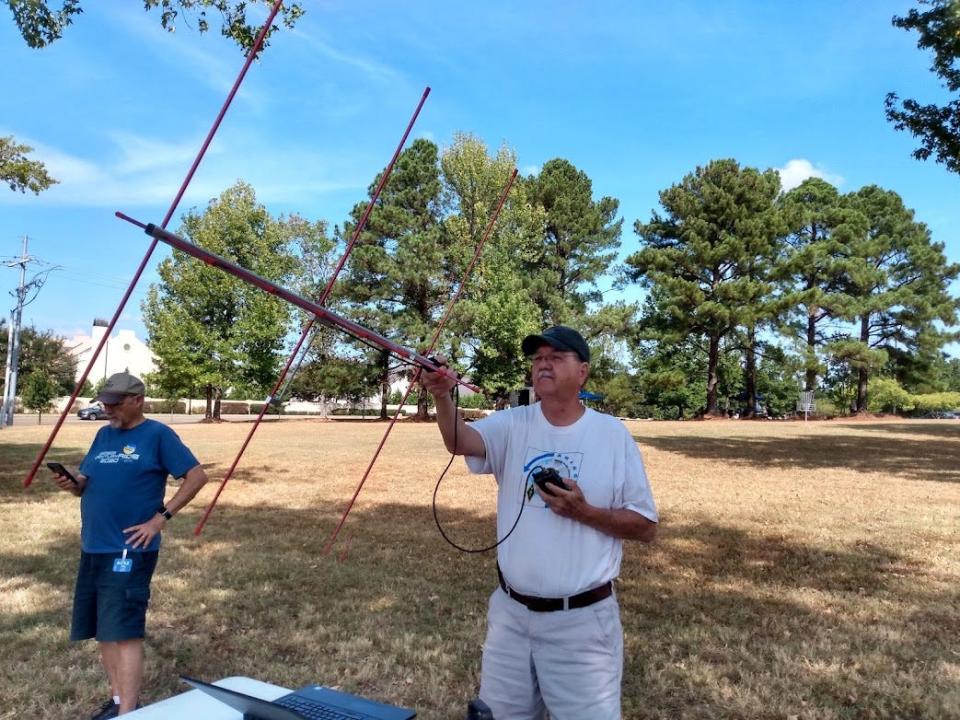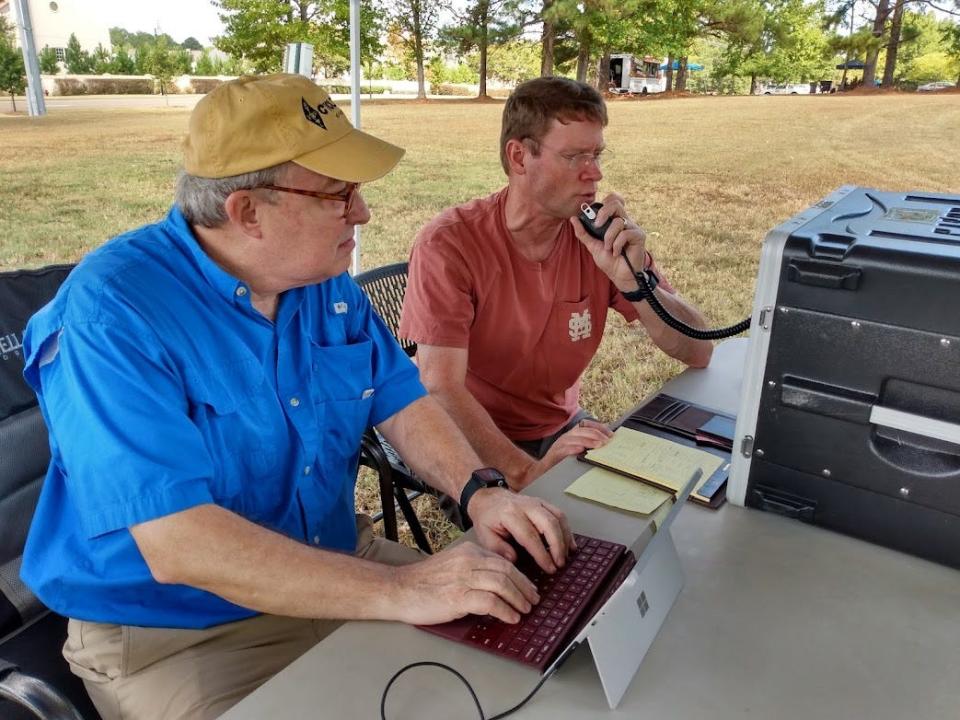Ham radio operators from throughout state gather in Ridgeland Saturday. See why
Members of the Jackson Amateur Radio Club gathered Saturday, Sept. 9, at Highlands Presbyterian Church in Ridgeland to participate in “Churches on the Air,” an annual ecumenical event begun in England over 65 years ago.
Group member Frank M. Howell, Ph.D., a retired Mississippi State University professor who also serves as an assistant director of the American Radio Relay League, said 2023 marks the first year for American churches to get involved with the event, which is designed to promote wireless communications between Christian congregations worldwide.
“This year we had over eight U.S. churches participating,” Howell said.
By around 10 a.m. Saturday the local group had successfully made communications with the first such American church via ham radio — Mt. Lebanon Evangelical Presbyterian Church based in Pittsburgh, Pennsylvania.
Many of the group members participating Saturday said their interest in amateur radio began during their childhoods.

“My father was interested in electronics so I got interested as a short wave listener and learned Morse Code in the Boy Scouts,” said Clay Quarterman, who grew up in Hazlehurst. He eventually obtained his radio license and began broadcasting after graduating from Reformed Seminary in Jackson. It was about that time he and his wife Darlene began serving as missionaries in Portugal.
“Phone calls were very expensive,” Quarterman said, making radio communications from abroad a more affordable alternative.
While the traditional image of a ham radio station may involve a garage full of bulky, antique equipment and shelves full of tubes, capacitors and other spare parts, Howell said advances in technology have changed the way most ham operators communicate today. A modern long distance transceiver is often small enough to be held in one hand, like a walkie-talkie, he said.

Another misconception, Howell said, is that with advances in internet and cell telephone technology, the interest in ham radio operation has waned. Howell said just the opposite is actually true.
“It is more popular than ever. Right now there are 750,000 licensed operators in the U.S. and the number continues to grow every year,” he said.
Advances in technology, including satellite relays and the development of wireless keyboard-to-keyboard communications continues to bring new, younger people into the hobby, Howell said.
He noted that the world’s largest equipment supplier for the amateur radio market, MFJ Enterprises, is based in Mississippi. The company was founded in 1972 by Martin F. Jue in Starkville and makes a broad range of products, including antenna tuners and antenna switching equipment.
With wires strung between trees on the church grounds serving as antennas, group members Mike McKay and Thomas Gandy on Saturday morning made communications with an operator in Macedonia — some 5,749 miles away from Mississippi, using the keyboard mode. McKay said the contact was made on the 10 meter band using only 10 watts of power powered by a battery.
Group member Tom Brown, who had a tent set up nearby, was communicating in the more traditional manner, tapping out dots and dashes with his Morse code high-frequency transmitter.
At one time to obtain a ham radio license an operator had to be proficient in Morse code, Brown said. And though that requirement was eventually dropped, he said it remains a popular technology among ham enthusiasts.
Group member Eddie Pettis demonstrated a hand-held “Aero antenna” connected to what looks like a walkie talkie. The device is used to communicate with satellites which group members were able to track using a cell phone application. As one such satellite traveled across Mississippi Pettis was able to intercept voice communications between various operators on the west coast, in California, Oregon and Washington state.
Howell credits the amateur radio community for helping to develop much of the modern technology used today in wireless telephone and internet communications.
“We pioneered and have contributed to the growth of that technology,” he said.
While the Jackson area group was formed in 1949, the history of ham radio operators goes back to the very earliest days of wireless telegraph communications in the 1890s. In those days, the radio spectrum was largely unregulated. Conflict emerged, however, as military, commercial and amateur interests competed for radio frequencies over the limited airwaves.
This led to passage of the Wireless Ship Act of 1910, the U.S. federal government’s first attempt to regulate radio. The act was strengthened by congressional passage of the Radio Act of 1912 and eventual creation of the Federal Radio Commission (predecessor of the Federal Communications Commission) in 1927.
Howell said ships and the military initially were granted what were considered the more favorable frequencies while ham operators were consigned to the less desirable short wave frequencies. “They gave us those frequencies because nobody wanted them,” Howell said.
Radio Club president Jim Armstrong said members continue to train weekly to assist local emergency responders in the event of a natural disaster such as a hurricane or wildfire.
Working with the National Weather Service, he said operators can advise officials of weather conditions on the ground in any given area that might not be picked up by radar.
“Radar doesn’t show what happens from 200 feet down,” Armstrong said.
Members of the Jackson Amateur Radio Club currently meet at Covenant Presbyterian Church on Ridgewood Road in Jackson. The meetings are held on the third Thursday of each month at 7:30 p.m.
A big event for the group is the annual Ham Fest, with the next one set for Feb. 2-3, 2024, at the Mississippi Trade Mart. The convention brings some 750 ham enthusiasts from throughout the state and region to Jackson for workshops and product demonstrations.
Potential new members are always welcome to attend meetings of the Radio Club and existing members will be glad to help others become licensed. For more information visit www.msham.org or you may call president Jim Armstrong at 601-709-6740.
This article originally appeared on Mississippi Clarion Ledger: Ham radio operators from throughout the state gathered in Ridgeland MS

